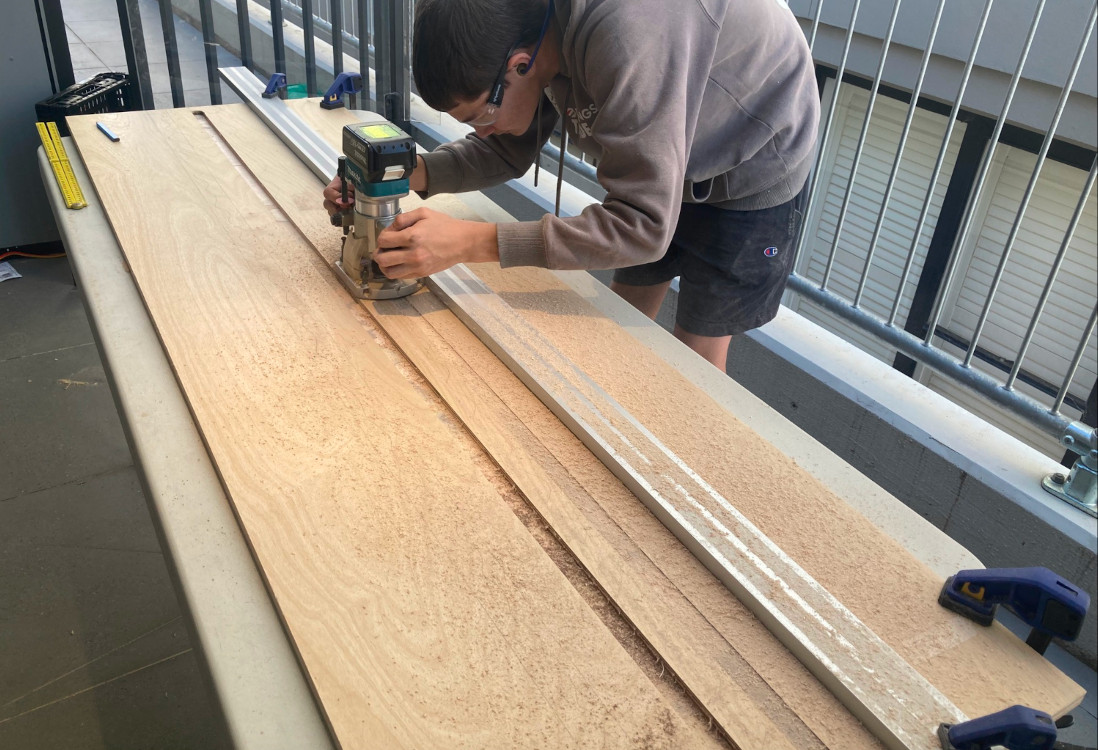An intriguing post by a former colleague at the Bible Society alerts The Other Cheek to an item of church furniture The Other Cheek was quite ignorant of. “In Salvation Army architecture, the [physical] cross is not central or essential, Anthony posted. “The must-have item is the Mercy Seat. This is a bench, usually right at the front of the hall, where anyone can come and kneel for prayer. The mercy seat itself is not special, but it is a place where special things can happen.”
Anthony was posting because a talented young member of his corps or citadel (local church) was building a new mercy seat.
“In the Old Testament, a Mercy Seat was found along with the Ark of the Covenant to create the space in which Yahweh appeared and dwelled. Now, we don’t need a Mercy Seat to meet with God, but it is important in Salvation Army tradition to have a place where one can publicly respond, pray and be prayed for.
“I’ve had the privilege of watching Isaac …. design and build our new Mercy Seats at Parramatta Salvos and serving as his vacuum-wielding apprentice. These new benches contain timber inlays from the original Mercy Seats at Smith Street, and the new timber matches other timber panelling in our building (fun fact: this plywood was from Russia, and we managed to get the last few sheets in Australia in this specific colour).”
In a War Cry article, Major Nigel Bovey from England, explains that the mercy seat retains salvation at the heart of the Salvation Army. “The mercy seat has become a place where addicts have stood up sober, the defeated have found victory, the troubled have found peace, and the sinner has found salvation,” he writes.
“The term “mercy seat” first appeared in The War Cry in January 1882: ‘Several poor drunkards rose to their feet and walked boldly to the penitent form, where … they laid hold of Christ by faith … In the Theatre we had a glorious time, 14 souls found their way to the mercy seat.’
Bovey makes it clear that the mercy seat is just one place to pray. “Although kneeling at the mercy seat is an outward sign of an inner spiritual impulse, the act is not a sacrament. The mercy seat is a place of grace but it is not the means of grace in the way that sacraments are perceived to be. Receiving salvation or holiness does not depend on spending time at the mercy seat. Salvationists believe in an any-time-any-place-anywhere-anyone God. Therefore, response to Him—communion with Him—does not depend on time or place. Salvation Army history is filled with instances of people finding God in the street, in hospitals, at home or in a bar.”
And what does the mercy seat look like? It is just a simple wooden bench.
Aussie salvo Captain Scott Strissel wrote in their Others magazine about the passion the mercy seat engenders.
“The mercy seat beckons us to:
· Reconnect with our Saviour
· Bring petitions and prayers as intercessors
· Pray in thanksgiving
· Seek forgiveness
· Find reconciliation and re-ignition
· Pour out the deepest secrets of our hearts before the Holy Spirit, who has been prodding us to let him in
· Surrender or surrender again
· Bring your brother or sister who needs encouragement and assurance; who needs a friend; who desires new life and is sick of sin
“So, is the mercy seat pointless in our modern, sophisticated age? Yes. It’s as pointless as the Son of God stepping down out of heaven and taking our sins upon himself. If that is pointless, then so are our lives.
“The mercy seat is so much more than a kneeling place for sinners or saints. It is the exhalation of sin and the inhalation of salvation, new life and holiness. We should preach and emphasise it over and over again, with clarity, sincerity and truth.”
Image: Building the Parramatta Citadel mercy seat via Anthony

